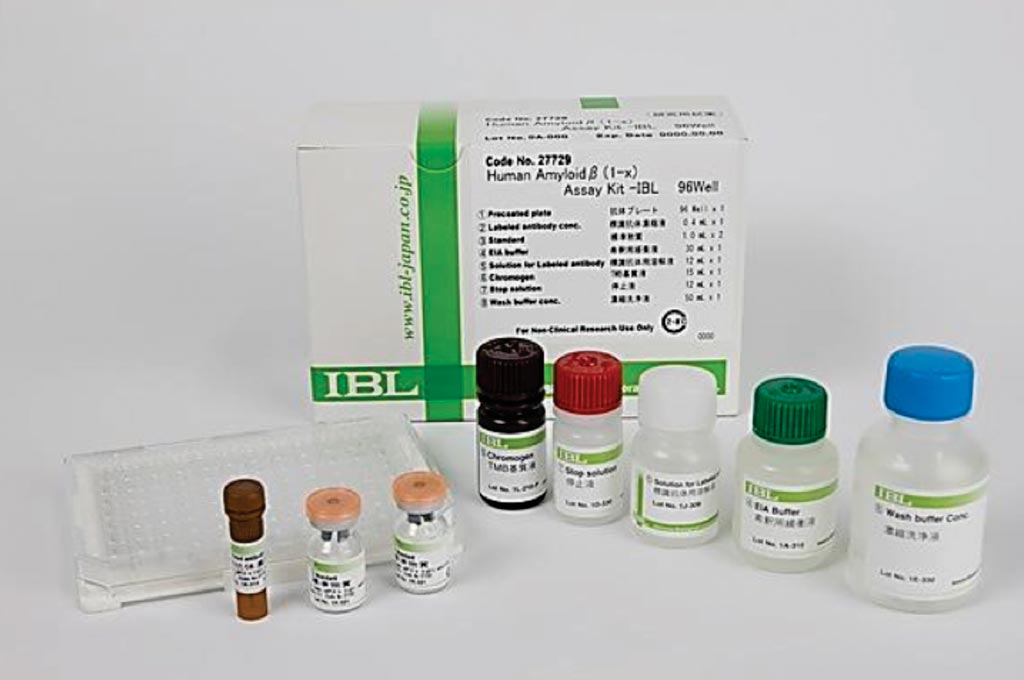Alzheimer Disease CSF Biomarker Used in Clinical Setting
By LabMedica International staff writers
Posted on 27 Mar 2018
Analysis of cerebrospinal fluid (CSF) is one of the key tools for the state-of-the-art differential diagnosis of dementias. Dementia due to Alzheimer’s disease (AD) is characterized by elevated CSF levels of total Tau (tTau) and phospho-181-Tau (pTau) and low CSF amyloid-β42 (Aβ42).Posted on 27 Mar 2018
CSF plays and important role in the differential diagnosis of AD, but lack of standardization compromises use in clinical laboratories, presenting risk of over- and underdiagnoses. It has recently been shown that analysis of Aβ40 as well as Aβ42 concentrations may provide greater sensitivity and specificity.

Image: Human Amyloidβ Oligomers enzyme-linked immunosorbent assay (ELISA) Kit (Photo courtesy of IBL International).
Scientists at the University Medical Center Göttingen (Germany) sent parallel aliquots of CSF samples from 114 subjects to two independent laboratories for analysis of t-Tau, p-Tau, Aβ42, and Aβ40 and concentrations and Aβ42/40 concentration ratios, with measurements done in accordance with each laboratory’s specific standard operating procedures and cut-off points. Mean age of study subjects was 66.5 years, and 52% of the cohort were men. Biomarker levels and corresponding diagnostic classifications were compared, and the degree of agreement between results of the different laboratories was assessed.
The Aβ42 and Aβ40 measurements performed by the two laboratories showed statistically significant correlations. Statistically significant correlations for p-Tau and t-Tau measurements and CSF Aβ40 was also were seen. Not surprisingly, though, substantial discrepancies in regard to the Aβ42 concentrations and Aβ42/40 ratios were noted, likely owing to use of different assay kits, from IBL International and Fujirebio.
Discrepancies were not seen for Aβ40 or t-Tau and p-Tau measures; however, diagnostic interpretations between laboratories were often discordant for Aβ42 as well as t-Tau and p-Tau, as cut-off points differed between laboratories. Of note, however, is that, when subjects were diagnostically classified via interpretation of Aβ42 levels (normal versus pathological range), a discordance was cited in 32% of cases whereas, when the classification was based on the Aβ42/40 ratio, discordance was reduced to 17% of cases.
The authors concluded that CSF Aβ42/40 can outperform Aβ42 as a biomarker for AD neuropathology, not only under well-controlled study conditions but also in real life clinical routine. Thus, they recommend the inclusion of Aβ42/40 as a CSF biomarker in the diagnostic procedure. The study was published online on February 6, 2018, in the Journal of Alzheimer's Disease.
Related Links:
University Medical Center Göttingen













